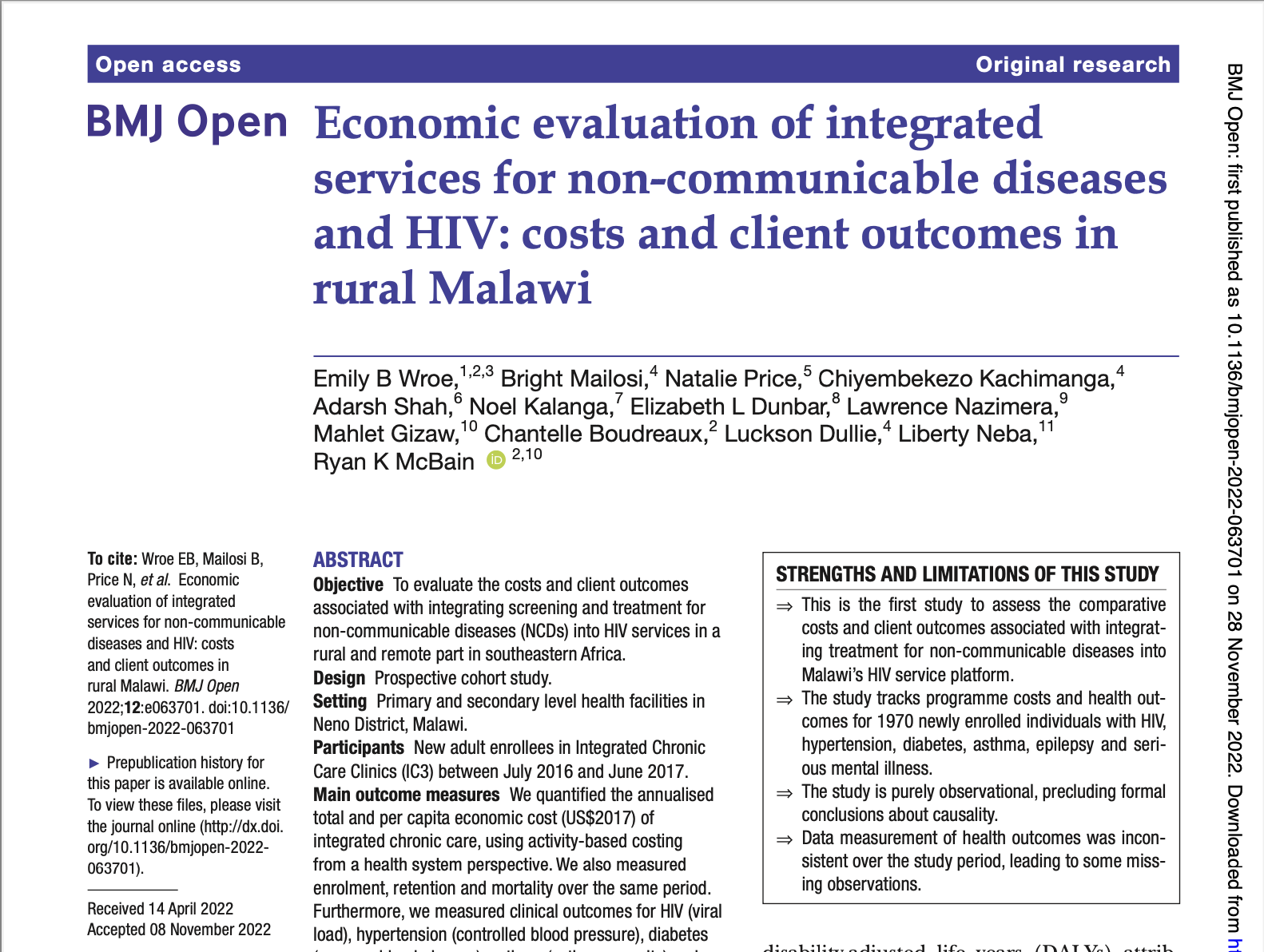Emily B Wroe, Bright Mailosi, Natalie Price, Chiyembekezo Kachimanga, Adarsh Shah, Noel Kalanga, Elizabeth L Dunbar, Lawrence Nazimera, Mahlet Gizaw, Chantelle Boudreaux, Luckson Dullie, Liberty Neba, Ryan K McBain

We quantified the annualised total and per capita economic cost of integrated chronic care at primary and secondary level health facilities in Neno District, Malawi, using activity-based costing from a health system perspective. We also measured enrolment, retention and mortality over the same period. Furthermore, we measured clinical outcomes for HIV (viral load), hypertension (controlled blood pressure), diabetes (average blood glucose), asthma (asthma severity) and epilepsy (seizure frequency).
The annualised total cost of providing integrated HIV and NCD care was $2 461 901 to provide care to 9471 enrollees, or $260 per capita. This compared with $2 138 907 for standalone HIV services received by 6541 individuals, or $327 per capita. Over the 12-month period, 1970 new clients were enrolled in IC3, with a retention rate of 80%. Among clients with HIV, 81% achieved an undetectable viral load within their first year of enrolment. Significant improvements were observed among clinical outcomes for clients enrolled with hypertension, asthma and epilepsy (p<0.05, in all instances), but not for diabetes (p>0.05).
Integrated Chronic Care Clinics (IC3) is one of the largest examples of fully integrated HIV and NCD care. Integrating screening and treatment for chronic health conditions into Malawi’s HIV platform appears to be a financially feasible approach associated with several positive clinical outcomes.
